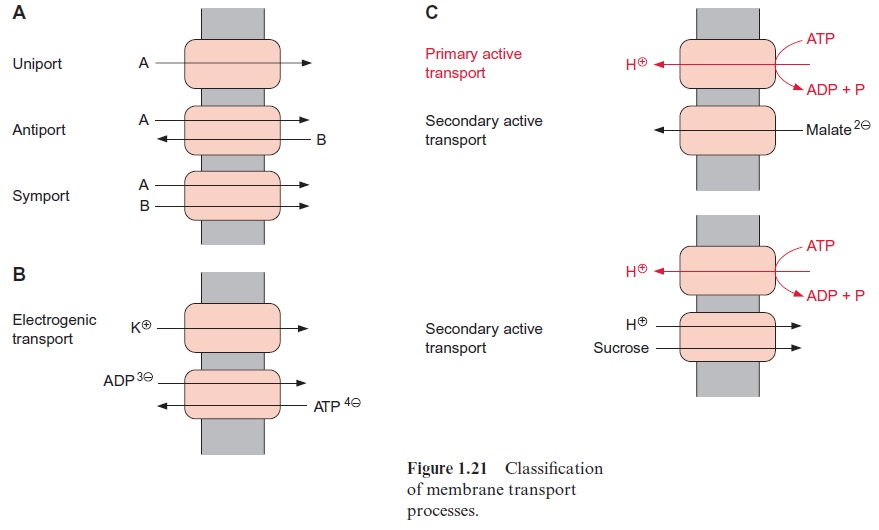Chapter: Plant Biochemistry: A leaf cell consists of several metabolic compartments
Various transport processes facilitate the exchange of metabolites between different compartments
Various transport processes facilitate the exchange of metabolites between different compartments
Each of the cell organelles mentioned in the preceding section has a specific function in cell metabolism. The interplay of the metabolic processes in the various compartments requires a transfer of substances across the mem-branes of these cell organelles as well as between the different cells. This transfer of compounds takes place in various ways: by specific translocators, channels, pores, via vesicle transport, and in a few cases (e.g., CO2 or O2) by non-specific diffusion through membranes. The vesicle transport and the function of the plasmodesmata have already been described.

Figure 1.21 illustrates various types of transport processes according to formal criteria. When a molecule moves across a membrane independent of the transport of other molecules, the process is called uniport, and when counter-exchange of molecules is involved, it is called antiport. The manda-tory simultaneous transport of two substances in the same direction is called symport. A transport via uniport, antiport, or symport, in which a charge is simultaneously moved, is termed electrogenic transport. A vectorial trans-port, which is coupled to a chemical or photochemical reaction, is named active or primary active transport. Examples of active transport are the trans-port of protons driven by the electron transfer of the photosynthetic electron transport chain or the respiratory chain or by the consumption of ATP (Fig. 1.21C). Such proton transport is electrogenic; the transfer of a positive charge results in the formation of a membrane poten-tial. Another example of primary active transport is the ATP-dependent transport of glutathione conjugates into vacuoles.
In a secondary active transport, the only driving force is an electrochemi-cal potential across the membrane. In the case of an electrogenic uniport, the membrane potential can be the driving force by which a substrate is transported across the membrane against the concentration gradient. An example of this is the accumulation of malate in the vacuole (Figure 1.21C). Another example of secondary active transport is the transport of sucrose via an H+ -sucrose symport in which a proton gradi-ent, formed by primary active transport, drives the accumulation of sucrose (Figure 1.21C). This transport plays an important role in loading sieve tubes with sucrose .
Related Topics